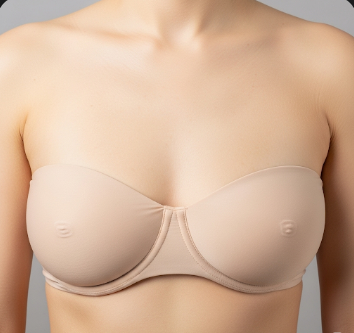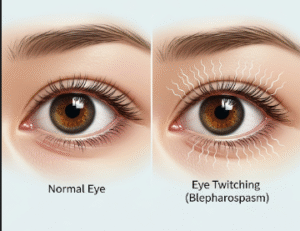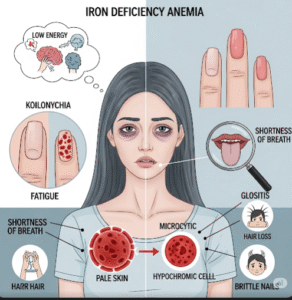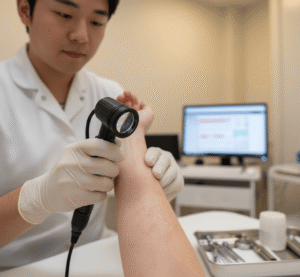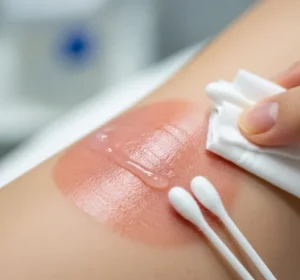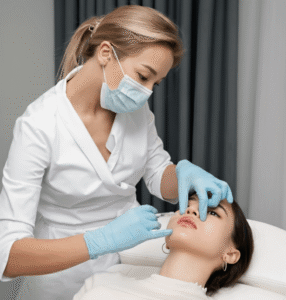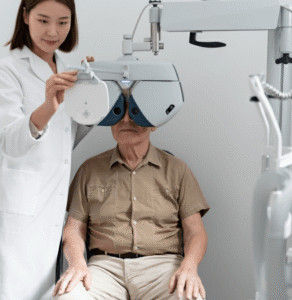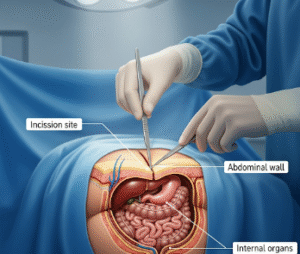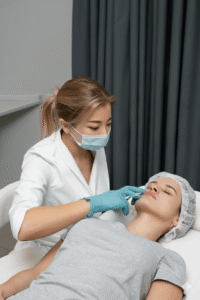Overview
Breast asymmetry refers to a condition in which one breast differs in size, shape, or position from the other. While minor asymmetry is extremely common and often considered normal, noticeable differences can sometimes indicate underlying medical conditions or developmental issues. Breast asymmetry can affect self-esteem, body image, and clothing fit, making awareness and, if needed, medical evaluation important.
In South Korea, plastic surgery clinics, breast health centers, and gynecology specialists offer comprehensive evaluation, non-surgical and surgical correction options, and support for women seeking solutions for breast asymmetry.
Key Facts
Highlights:
➡️ Breast asymmetry is extremely common, with most women having slight differences between breasts.
➡️ Significant asymmetry can develop during puberty, pregnancy, breastfeeding, or due to hormonal changes.
➡️ Underlying medical conditions, such as cysts, tumors, or infections, may occasionally cause asymmetry.
➡️ Early evaluation is important to rule out serious conditions and discuss corrective options.
➡️ South Korea provides advanced imaging, surgical correction, and cosmetic solutions for breast asymmetry.
What is Breast Asymmetry?
Breast asymmetry is a difference in size, shape, or position between the two breasts.
Characteristics include:
- Variations in breast volume (one breast may appear larger or smaller)
- Differences in nipple position, areola size, or breast contour
- May be present from puberty or develop over time
- Can be temporary, such as during menstrual cycles, pregnancy, or breastfeeding
- In some cases, asymmetry may indicate underlying pathology such as benign cysts or tumors
Breast asymmetry is typically benign, but persistent or rapidly changing differences should be evaluated by a healthcare professional.
What Symptoms are Related to Breast Asymmetry?
Symptoms associated with breast asymmetry may include:
- Noticeable difference in breast size or shape
- Uneven nipple position or differences in areola diameter
- Discomfort or back pain due to uneven weight distribution (in severe cases)
- Self-consciousness or body image concerns
- Tenderness or swelling if associated with hormonal changes or cysts
- Changes in texture or skin dimpling in rare cases, which require medical evaluation
Highlights:
➡️ Most breast asymmetry is mild and does not cause physical symptoms.
➡️ Rapid or painful changes warrant medical assessment to rule out underlying conditions.
What Causes / Possible Causes of Breast Asymmetry?
Highlights:
➡️ Normal Development: Minor differences are common during puberty due to uneven growth.
➡️ Hormonal Changes: Pregnancy, breastfeeding, menstrual cycles, and menopause can cause temporary asymmetry.
➡️ Genetic Factors: Natural differences in breast tissue and chest wall structure.
➡️ Medical Conditions:
- Benign cysts or fibroadenomas
- Breast infections or abscesses
- Trauma or surgical procedures
➡️ Cancer: Rarely, a rapidly growing mass or skin changes can indicate malignancy, which must be evaluated promptly.
➡️ Lifestyle or Posture Factors: Unequal muscle development or posture may accentuate visual differences.
➡️ Mechanism: Differences arise from variation in breast tissue volume, hormonal influence, or underlying pathology.
When Should I See My Doctor?
Highlights:
➡️ If asymmetry develops suddenly or rapidly in one breast.
➡️ If accompanied by pain, skin changes, nipple discharge, or lumps.
➡️ If concerned about cosmetic appearance affecting self-esteem or daily comfort.
➡️ For evaluation before considering surgical correction, such as augmentation or reduction.
➡️ Early medical assessment ensures proper diagnosis and identifies whether intervention is needed for medical or cosmetic reasons.
Care and Treatment
Management focuses on reassurance, monitoring, or corrective options depending on severity:
Highlights:
➡️ Observation and Monitoring: Mild asymmetry often requires no treatment.
➡️ Non-Surgical Options:
- Padded bras or prosthetic inserts for cosmetic balance
- Physical therapy to improve posture and chest muscle symmetry
➡️ Surgical Correction:
- Breast augmentation, reduction, or lift to achieve symmetry
- Fat grafting or implant adjustments as per individual needs
➡️ Treatment of Underlying Conditions:
- Removal of cysts, fibroadenomas, or abscesses if present
- Prompt treatment if a malignancy is detected
➡️ Lifestyle and Supportive Measures: Comfortable clothing, supportive bras, and counseling for body image concerns.
➡️ Patient Education: Awareness of normal asymmetry vs. pathological changes.
Treatment Options in Korea
South Korea provides advanced care for breast asymmetry through a combination of cosmetic and medical services:
Highlights:
➡️ Plastic Surgery Clinics: Expert evaluation and surgical correction, including augmentation, reduction, and contouring.
➡️ Breast Health Centers: Screening and management of cysts, benign tumors, and other breast conditions.
➡️ Advanced Imaging: Mammography, ultrasound, and MRI for accurate assessment.
➡️ Minimally Invasive Procedures: Fat grafting, implant adjustments, or cyst removal.
➡️ Counseling and Support Services: Psychological support for body image concerns.
➡️ Multidisciplinary Approach: Collaboration among plastic surgeons, gynecologists, radiologists, and counselors.
➡️ Medical Tourism Support: Structured evaluation, multilingual consultations, and follow-up care for international patients seeking cosmetic or medical management in Korea.

